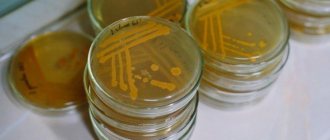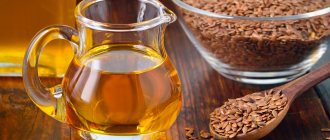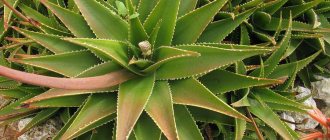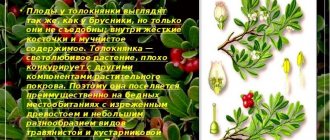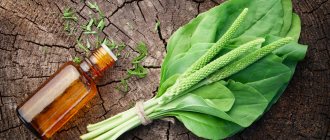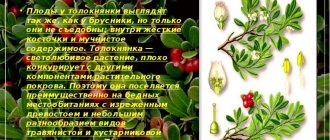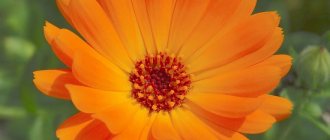Common coltsfoot (Tussilago farfara) is a perennial herbaceous plant from the Asteraceae family.
The rhizome is long, branched, and in early spring it first produces flower stems, at the tops of which single baskets of yellow flowers develop, and then, after flowering, rosettes of basal leaves appear.
The leaves are rounded, heart-shaped, unequally toothed, dark green above, white-fluffy below. The fruit is a cylindrical achene with a pappus (pappus) of soft hairs.
The lower surface of the leaf, if applied to the body, warms, and the upper surface cools, hence the name “coltsfoot”.
Common names : Kamchuzhnaya grass, two-leaf grass, mother grass, icy lapukha, king potion, one-sided.
Application and composition
The leaves (Folia Farfarae) and flowers (Flores Farfarae) are used for medicinal purposes. The leaves, like the flowers, are used to prepare emollients and expectorants used in decoctions, tea and other forms.
Coltsfoot is an old cough remedy, known in ancient times; the plant's Latin name indicates this (Tussis is Latin for cough). In some places, coltsfoot leaves are smoked for coughs. Leaves and flowers are part of “breast tea”.
The plant is used for mucous sputum, chronic bronchitis, whooping cough, laryngitis, bronchiectasis, bronchopneumonia and bronchial asthma.
The leaves contain the bitter glycoside tussilyagin, gallic acid and mucilage, which gives the plant enveloping, emollient and expectorant properties. It also contains tannins, tannin, sterols and carotenoids.
Flower baskets contain sterols, tannins, carbohydrates and an amorphous yellow pigment.
Contraindications
Coltsfoot flowers are not recommended for use for more than 4-6 weeks in a row. The plant is contraindicated for lactating and pregnant women.
Collection dates and methods
The leaves are harvested in June, when they are still relatively small and covered with whitish fluff on the underside and dark green on the top.
Flowers are harvested at the beginning of flowering (approximately April-May) in clear and dry weather, cutting off the flower baskets at their very base with scissors.
The collected raw materials (flowers or leaves) are usually dried under an iron roof in attics, in the open air, in rooms, spreading the raw materials on bedding (cloths, matting, etc.).
The best quality raw materials are obtained by frequently mixing the leaves and flowers during the drying process.
Inexperienced pickers often collect butterbur (Petasites) instead of coltsfoot. Butterbur leaves have a heart-shaped, triangular (not round) shape and are larger than the leaves of coltsfoot.
Basic requirements for the quality of raw materials
Leaves. When finished, dried, the leaves must be whole, not damaged by pests, and must retain their natural color: green on the upper side, white felt on the lower side.
The humidity of the raw materials is no more than 13%; browned leaves no more than 5%; covered with brownish rust spots - no more than 3%; crushed parts passing through a sieve with holes of 3 mm - no more than 2%; foreign impurities: organic (parts of other herbs) - no more than 2%; mineral (pebbles, sand, earth) - no more than 1%.
Flowers. Raw materials in the form of flowers should consist of dried flower baskets that have retained their yellow color and have a remaining peduncle more than 0.5 cm long. Each basket, 1-1.5 cm in diameter, is surrounded on the outside by a single-row wrapper of linear greenish leaves.
Humidity is not more than 15%, flower baskets with remains of stems from 0.5 to 2 cm long - no more than 4%; flower baskets with faded flowers and noticeable formation of a tuft (fluffy) - no more than 3%; crushed parts passing through a sieve with holes of 2 mm - no more than 2%; foreign impurities: organic - no more than 0.5%, mineral (pebbles, sand, earth) - no more than 1%.
All about herbs and more
General information
Family: Aster family (Asteraceae) – Asteraceae (Compositae). Botanical name: Tussilago farfara L. Pharmaceutical name: coltsfoot leaves - Farfarae folium (formerly: Folia Farfarae), coltsfoot flowers - Farfarae flos (formerly: Flores Farfarae). Generic name: The generic name Tussilago comes from the Latin tussis - cough and agree - to remove (indicating the plant's medicinal use). The Russian “coltsfoot” is given in connection with the pubescence of the leaves, the lower surface is pubescent and causes a feeling of warmth (“mother”), the upper surface is smooth, cold (“stepmother”). The specific name farfara comes from the Latin. far – flour and ferire – to wear (this name reveals the appearance of the plant: the lower surface of the leaf is powdery white). Common names: Butterbur, Kamchuzhnaya grass, Latrinik forest, Mother grass, Two-wort, Rannik, Podbel, Belopukh, Near-river grass, Water burdock, Horsehoof, Bili leaves, Bilpukh (Ukrainian), Podbial, Kopyto (Polish). In English, for example, almost all names are associated with the hoof and the animal that owns this hoof: Foalsfoot (foal's hoof), Ass's Foot (donkey's hoof), Bullsfoot (bull's hoof), etc.
Planet: - Venus. Zodiac sign: - Gemini, Aries or Cancer. Element: - water. Deities: - Ariadne Language of Flowers: - maternal care. Basic properties: - . Description: Perennial herbaceous plant from the Asteraceae family. The rhizome is long, creeping. The flowering stems are erect and unbranched, reach a height of 10 to 25 cm and are covered with scaly, ovate-lanceolate, often reddish leaves. Basal leaves appear only after flowering. They are long-petiolate, rounded-heart-shaped, 10-25 cm in diameter, angular, unequally toothed, leathery. At first, these leaves are covered with felt on both sides, but then they become bare on top, and with soft felt pubescence on the bottom (this effect provoked the Russian name of the plant). At the tops of the stems there are flower baskets of golden yellow color. The flowers in the basket are reed-shaped at the edges and tubular in the middle. Achenes are about 3.5-4 mm long with a tuft of white silky hairs. The coltsfoot baskets are single, 2-2.5 cm in diameter, which droop after flowering. Both in flowering and fruiting form, the plant strongly resembles a dandelion. Places of growth: As a weed, coltsfoot is common in Belarus, Russia, Ukraine, Siberia, and the Far East. Characteristic of forest, less often steppe zones. It can live on coastal cliffs, screes, banks of rivers and streams, in damp ravines, along railway embankments, quarries for the extraction of clay and ballast and in other habitats with disturbed grass cover. Interestingly, the easiest way to collect coltsfoot is in cities on the territory of new buildings: after the ground is opened for a foundation pit, a year later the coltsfoot is already growing on the bare ground. Parts used: The leaves and flowers of the plant were widely used and are still used today in folk medicine as ingredients for healthy decoctions, head rinses and juices.
In folk medicine, in addition to the parts already mentioned, roots are also used. And in general, traditional medicine is more sensitive to all parts of the plant, trying to find useful uses for each. Collection and preparation
Coltsfoot leaves are best collected in June-July, but flowers - in April-May.
According to Paul Sedir, the coltsfoot should be "collected under the influence of the lion after the full moon that ends the holidays." In general, if we describe the collection and harvesting process in more detail, then the leaves must be collected manually, tearing off the leaf blades with petioles in the first half of summer, when they are relatively small and have a dark green color on the upper side, and are covered with a whitish fluff on the lower side (i.e. i.e. when they have not turned brown and are not covered with rusty spots of fungal disease). Dry in the open air, in attics or in ventilated areas, laying out a thin layer on paper. Browned and spotted leaves are thrown away, ready for use - stored in closed boxes, plywood boxes lined with thick paper or in jars in a dry place. The shelf life of the leaves is approximately 3 years. Flowers should be collected in early spring. They are usually dried in a cool oven or in the attic. The flowers of the plant can be stored for 2 years. An interesting fact is that coltsfoot flowers usually bloom and fall off before the plant acquires leaves, which is why in Britain, for example, the plant was called “son before the father” (in the original: “son before the father”) father"). Medicine:
Active substances: Coltsfoot leaves contain bitter glycosides, saponins, carotenoids, gallic, malic and tartaric acids, sitosterol, ascorbic acid, polysaccharides (inulin and dextrin), mucus, tannins, traces of essential oil, mineral salts.
The flowers also have medicinal value and are used in collections. They contain arnidol, tannins, sigmasterol, taraxanthin, faradiol, sitosterol. Traditional Medicine:
In folk medicine, coltsfoot leaves are used together with flowers in the form of a decoction as an expectorant and diaphoretic for colds, as well as for inflammation of the mucous membranes, catarrh of the stomach (gastritis), kidney diseases, catarrh of the bladder (cystitis), catarrh of the large and small intestine (colitis and enteritis). Also, sometimes the plant is used in combination with black elderberry flowers, linden blossom, mullein, comfrey and other plants. Juice squeezed from a fresh plant is considered wound-healing. Sometimes it is prescribed for tuberculosis and persistent rhinitis (injected into the nostrils). A decoction of coltsfoot and nettle leaves taken equally is used to wash the hair for hair loss, dandruff and itchy skin. In addition, fresh leaves are applied to inflammation to produce an abscess; their juice is for scrofulous abscesses; in the form of a paste - to vereds, immature abscesses - Kamchug (hence the popular name “Kamchug grass”). Also in folk medicine, the leaves are often used to stimulate appetite and improve digestion. Cigarettes from coltsfoot are smoked with a strong spasmodic cough. Here is what Avicenna writes about this: “They say that coltsfoot is the best medicine for coughs and “standing breathing”... if you take its dry leaves or roots and fumigate yourself with them and inhale the smoke, then its benefits will become obvious.” . In addition, Dioscorides, Pliny and Galen spoke about the beneficial properties of smoking coltsfoot. Another similar smoke is “kept in the mouth” for toothache
Warning: But in some countries they tried to ban coltsfoot as a freely distributed plant (and in Australia and New Zealand they even banned it) due to the fact that the leaves contain alkaloids that negatively affect the liver.
The only thing you must always remember is that any medicine can become a deadly poison if you do not monitor its dosage. Coltsfoot should not be taken during pregnancy, late menstruation, or liver disease. In addition, you cannot use coltsfoot tea for a long time. Magic:
According to magical and astrological characteristics, the coltsfoot’s gender is female, the patronizing planet is Venus, and the element is water.
As for the ruling sign of the zodiac, here we find two: Aries and Gemini. But, surprisingly, information from various sources sometimes classifies this plant not only as the two described above, but also as a crayfish, and even as a lion (due to its bright yellow flowers). Although personally, taking into account the fiery elements of Aries and Leo, I am inclined to attribute the coltsfoot to Gemini or Cancer. As you can guess just by looking at the ruling planet, the magical powers of the plant lie, for the most part, in love. Also, the most common use is to smoke coltsfoot as part of incense, during a ritual to summon spirits, or to receive prophetic visions. In addition, the plant is used in preparations promoting well-being, health and tranquility. May be present in amulets for children and women. But the main effect of coltsfoot is calming and softening. This, it seems to me, is connected with the medicinal use of the plant: after all, it softens coughs and treats respiratory diseases. The practical use of coltsfoot in love magic is as follows (besides the fact that it is a natural aphrodisiac): the plant is added to bags that are worn for the purpose of attracting love. British beliefs claim that the same soft white fluff, located on the “mother” side, was once used by Scottish highlanders as a filler for mattresses and pillows. Of course, this is hard to believe, because it is difficult to imagine how many kilograms of leaves were needed for one seedy pad, but the British associate the plant with this very belief. Myths and Legends:
There is a legend associated with the appearance of this flower on earth; love and jealousy were not absent here.
One evil woman planned to destroy her husband’s daughter because she didn’t want him to go meet her and his ex-wife.
She lured her to a cliff and pushed her off it. Meanwhile, the mother, having discovered that the girl was missing, rushed to look for her, but was too late; the girl was already lifeless. She rushed at her stepmother and, grappling, they flew to the bottom of the ravine. And the next day, its slopes were covered with a plant, the leaves of which were soft on one side and hard on the other, and small yellow flowers, reminiscent of the girl’s blond hair, rose above them. Recipes, infusions, decoctions:
Medicinal tea: in proportions 4:3:3, take butterbur leaf, plantain leaf and licorice roots, respectively.
1 tablespoon of the mixture should be brewed with 2 cups of boiling water, leave for 30 minutes, strain and drink 2 tablespoons every 3 hours. The collection promotes expectoration. In proportions 2:2:1, take coltsfoot leaf, raspberry fruits and oregano herb, respectively. 1 tablespoon of the mixture should be poured into a thermos overnight with 1 glass of boiling water. Strain. It should be taken hot at night as a diuretic and diaphoretic. Mix mint leaf, plantain leaf and coltsfoot leaf in equal proportions. Pour 1 tablespoon of the mixture into 1 glass of boiling water, leave for 15-20 minutes and then strain. You should take this decoction half a glass 3 times a day for furunculosis. Mix nettle leaf, coltsfoot leaf, burdock roots and hop fruits in equal proportions. Pour 6 tablespoons of the mixture into 1 liter of boiling water and leave for 30 minutes, then strain. Used for a week to wash your hair (every other day) for hair loss, dandruff, and itchy skin. In equal proportions, mix coltsfoot leaf, leaf and flowers of sweet clover and small centaury herb. Pour 200 g of boiling water over 1 tablespoon and leave for 10 minutes. Drink 1/3 cup 6 times a day for 3 to 4 weeks. The collection helps treat inflammatory diseases of the ovaries, but during its use you should abstain from sexual activity. Use in cooking:
Carrot salad with coltsfoot leaves Ingredients: 50 g fresh carrots, 13 g coltsfoot leaves, 30 g kefir, salt. Grate peeled raw carrots on a coarse grater. The coltsfoot leaves, sorted and washed in several waters, should be finely chopped, seasoned with kefir and salt. Throat medicinal gummies Ingredients: 1 liter of loosely packed coltsfoot leaves (I assume we are talking about a liter jar of leaves), 450 g sugar, 600 ml. water, 450 g corn syrup, 50 g butter, half a teaspoon of baking soda. Wash the coltsfoot leaves thoroughly and then place them in a saucepan with 600 ml of water. Heat the mixture for another 2 minutes after boiling. Filter the leaves from the water, but do not throw away the resulting liquid. Add the sugar, corn syrup and butter to the pan along with the liquid left over from boiling the leaves. Boil until the resulting “toffee” becomes brittle when dropped into a bowl of cold water. Remove the pan from the heat and add baking soda. Beat the mixture with a spoon until it completely hardens. Then place the mixture on a shallow, oiled tray. Roll out the resulting solid mass, cut it into convenient cubes and put the resulting coffees in a jar or any other place where it will be convenient for you to store them. Sauce (cream) with coltsfoot Ingredients: 250 g of young finely chopped coltsfoot leaves, 1 clove of garlic (grated), 1 teaspoon of fried sesame seeds, salt and black pepper. Place coltsfoot leaves with grated garlic in a saucepan and fill the mixture with water to completely cover the contents. Bring the mixture to a boil, then reduce the heat and wait about 10 minutes more. Strain the leaves and grind them in a mortar along with sesame seeds. Lightly dry the mixture and mix until smooth. Add salt and black pepper to taste. Serve as an addition to mashed potatoes or rice gravy. Can also be paired with salad or vegetables. Sweet sorbet with coltsfoot Ingredients: 60 g fresh coltsfoot petals (carefully remove leaves and anything that is not petals), 250 g sugar, 800 ml. water, 1 teaspoon lemon juice, 1 egg white. To effectively separate the petals from any other junk, rub the flowers between your index finger and thumb. Place the petals along with sugar in a saucepan and fill it all with water. Bring to a boil, wait another 2 minutes and let the mixture simmer for another 20 minutes over low heat with the lid closed. Strain the mixture through a sieve and cool the resulting syrup. Add egg white. Beat the resulting substance either in an ice cream maker, or simply without removing it from the refrigerator (apparently, the French believe that every self-respecting housewife has an ice cream maker in her cupboard). The egg white will foam, turn white, and the entire sorbet will take on a whitish hue. If you do this in the refrigerator, then for the next hour you will have to repeat the whisking procedure every five minutes, and after that hour - every 15 minutes until the sherbet has completely set



